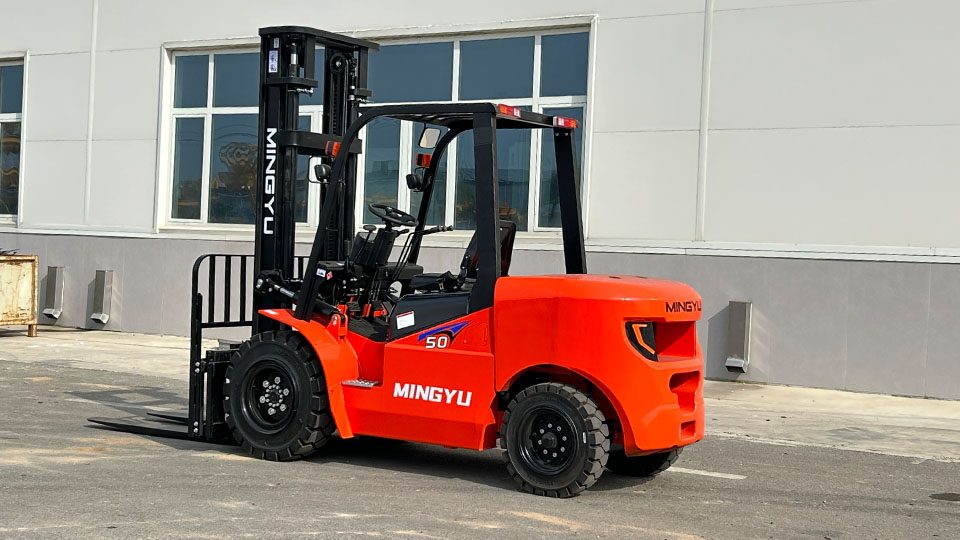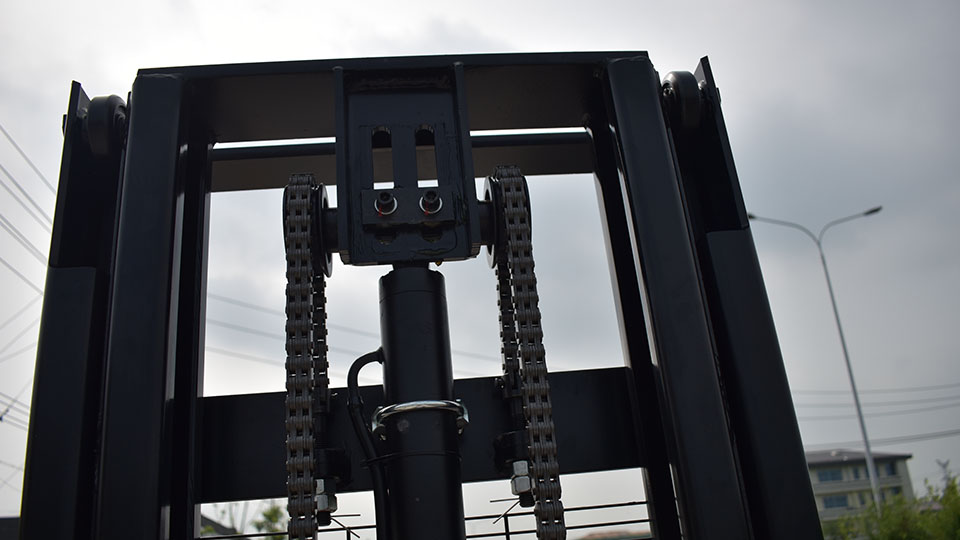
Can You Drive a Forklift with One Eye? A Technical Analysis of Monocular Vision and Powered Industrial Truck OperationThe safe operation of a Powered Industrial Truck (PIT), commonly known as a forklift, is fundamentally dependent on the operator’s ability to accurately perceive their environment. A key component of this perception is depth perception, which is typically facilitated by binocular vision (vision using two eyes).1 The question of whether an individual with monocular vision (vision in only one eye) can safely drive a forklift is a critical industrial safety and regulatory concern.There is no universal regulatory prohibition against operating a forklift with monocular vision. However, the determination hinges on a detailed assessment of the operator's visual acuity, field of vision, and, crucially, their ability to demonstrate adapted depth perception sufficient for the demands of the job.

1. Visual Physiology: Binocular vs. Monocular VisionTo understand the core challenge, it's essential to define the role of two-eye vision in material handling.
1.1 The Role of Binocular VisionBinocular vision provides two primary advantages critical to PIT operation:Stereopsis (True Depth Perception): This is the precise, three-dimensional spatial understanding derived from the slight horizontal disparity between the images received by the two eyes.
2 This ability allows an operator to instantly judge the distance between the forklift's tines and a pallet slot, the height of a stack, or the clearance in a narrow aisle.Increased Visual Field: Two eyes offer a wider peripheral field, enhancing situational awareness and the detection of moving objects or pedestrians around the vehicle.
1.2 Monocular Vision and Depth AdaptationAn individual with vision in only one eye lacks stereopsis. However, the brain compensates by relying on a sophisticated set of monocular cues to estimate distance and depth. This compensatory process is known as depth adaptation.Monocular Depth CueHow It Works in Forklift OperationRelative SizeA known object (e.g., a pallet) that appears larger is judged to be closer.Interposition (Overlap)An object partially obscuring another is judged to be nearer.Linear PerspectiveParallel lines (e.g., floor markings, aisle edges) appear to converge in the distance.Motion ParallaxObjects closer to the operator appear to move faster against a distant background when the operator moves the forklift. This is the most critical dynamic cue for monocular operators.Shading and Texture GradientsChanges in lighting and texture density are used to perceive curvature and distance.The technical safety question is whether these adapted monocular cues are reliable and rapid enough to substitute for the instantaneous judgment provided by stereopsis in the fast-paced, high-stakes environment of a warehouse.
2. Regulatory and Standard Requirements (OSHA and ANSI)In the United States, the operation of forklifts is primarily governed by the Occupational Safety and Health Administration (OSHA) and consensus standards like those from the American National Standards Institute (ANSI).32.1 OSHA's Stance and General RequirementsOSHA's standard for PITs (29 CFR 1910.178) focuses heavily on operator training and certification but does not specify a binocular vision requirement.4Training & Evaluation: OSHA mandates that only "trained and authorized operators" are permitted to drive a forklift.
5 Training must include a practical skills evaluation. If an operator with monocular vision can successfully pass this performance test, demonstrating safety and proficiency, the visual deficiency alone is not a barrier under OSHA rules.Medical Fitness: While OSHA does not require mandatory medical exams for all operators, the employer is responsible under the General Duty Clause for providing a safe workplace. If a medical condition, including a visual deficit, poses a "recognized hazard" to the operator or others, the employer must take corrective action. This places the burden on the employer's physician/medical professional to determine fitness for duty.
2.2 ANSI/ITSDF B56.1 StandardThe ANSI/ITSDF B56.1 Safety Standard for Low Lift and High Lift Trucks is frequently referenced for best practices. Section 4.19, "Operator Qualifications," addresses physical requirements:The standard suggests operators "should have visual acuity not less than 20/40 in each eye or 20/40 in one eye and 20/50 in the other, with or without corrective lenses."Crucially, it also requires "a field of vision of at least 100 degrees horizontally."The ANSI standard allows for monocular vision, provided the visual acuity (e.g., 20/40) and the field of vision (100 degrees) criteria in the functioning eye are met. This standard essentially endorses the concept of monocular adaptation, recognizing that excellent acuity and a wide field of view in one eye can compensate for the lack of stereopsis.
3. Technical Challenges in Forklift OperationWhile regulations may permit it, the physical demands of forklift tasks highlight why monocular vision presents specific, technical safety challenges.
3.1 Load Handling and Stacking AccuracyFork Engagement: The most critical task is accurately aligning the fork tines with the pallet openings (stringers) or load runners. Errors can lead to "fork skew" or striking the pallet, resulting in product damage or, more dangerously, load instability. The lack of stereopsis makes fine, rapid adjustments to fork height and angle more challenging. The operator must rely on monocular cues like the relative vertical position of the fork tip against the pallet opening, requiring slower, more deliberate movements.High Stacking: Placing a load on a high rack requires precise vertical and horizontal alignment in a constrained space. Without stereopsis, judging the exact distance between the load and the overhead rack beam is difficult. This increases the risk of misalignment, causing the load to "hang up," or pushing the load too far, leading to a fall hazard.
3.2 Operating in Confined SpacesNarrow Aisles: Forklifts often operate in aisles with only inches of clearance on either side. Misjudgment of the lateral distance to racks or columns can lead to structural damage or tipping. Monocular operators must heavily rely on linear perspective and known landmarks rather than instantaneous depth judgment.Load Manipulation with Attachments: Using specialized attachments (e.g., drum handlers, carton clamps) requires even finer precision than standard forks. The distance estimation for these complex movements is more susceptible to error without stereopsis.
3.3 Dynamic Movement and Reaction TimeThe Motion Parallax cue, while powerful, requires the vehicle to be moving to be effective.6 This means that a monocular operator may need to slightly "creep" the truck to gauge final approach distances, which can slow down operations. In an emergency, or when reacting to pedestrian traffic, the brief moment of hesitation or misjudgment in distance (e.g., how close a pedestrian is) could compromise safety.

4. Technical Assessment and Mitigation StrategiesFor an employer to ethically and legally allow monocular forklift operation, a rigorous, individualized assessment is mandatory, followed by targeted mitigation strategies.4.1 Required Medical and Functional TestingVisual Acuity: The functional eye must meet the $20/40$ acuity standard (or equivalent) with any necessary corrective lenses.Field of Vision: A horizontal field of vision of at least $100^{\circ}$ in the functional eye must be confirmed by a vision specialist.Functional Testing (On-Site): This goes beyond standard certification and must specifically test the use of monocular cues in real-world scenarios:Timed Precision Test: The operator must successfully and repeatedly stack loads to a high height (e.g., $15$ feet) and engage a complex load (e.g., triple-stacked pallets) without contact or error, demonstrating efficient use of adapted depth cues.Maneuvering Test: Successful navigation of the narrowest aisle the operator will encounter, with minimal speed reduction, to test lateral distance judgment.Braking Distance Test: Evaluating the operator's ability to accurately judge stopping distance, especially when approaching pedestrian cross-aisles.
4.2 Mitigation and AccommodationIf the operator demonstrates sufficient proficiency, the following technical and operational accommodations should be implemented:StrategyTechnical ImplementationPurposeEnvironmental ControlInstallation of highly visible line markings (linear perspective cues) and standardized visual targets on racks (size/relative position cues).Enhances the reliability and availability of critical monocular depth cues.Equipment ModificationEquipping the forklift with laser guides that project lines onto the pallet or rack. Advanced camera/sensor systems (e.g., distance sensors on the fork tips) to provide audio feedback on proximity.Provides external, technical substitutes for stereoscopic data.Operational ProceduresReduced Speed Limits in high-precision areas (e.g., high-rack aisles). Mandating a "creep and check" approach for final fork engagement.Reduces the margin for error and allows motion parallax to be used effectively.Ergonomics & PostureEnsuring the operator has an ergonomically optimized seat and clear sightlines, minimizing the need for excessive neck or body movement, which can disrupt established visual fields.Optimizes the use of the available visual input.
5. Conclusion and SynthesisCan an individual drive a forklift with one eye? Technically and legally, yes, provided they can unequivocally demonstrate safe, proficient, and reliable operation by compensating for the lack of stereopsis.The key distinction lies between having monocular vision and being visually unfit. An operator is unfit if their visual acuity, field of vision, or, most critically, their adapted ability to judge depth and distance compromises safety standards.For employers, the responsible course of action is an individualized, performance-based assessment aligned with the ANSI B56.1 standards. The assessment must be conducted by a certified trainer and, ideally, overseen or informed by an occupational health professional. Relying solely on a passing vision test is insufficient; actual performance on the job, under realistic conditions, is the only valid metric for fitness for duty. Safety must always outweigh expediency, and the risks associated with high stacking and narrow aisle operation demand this heightened scrutiny.
Name: selena
Mobile:+86-13176910558
Tel:+86-0535-2090977
Whatsapp:8613181602336
Email:vip@mingyuforklift.com
Add:Xiaqiu Town, Laizhou, Yantai City, Shandong Province, China